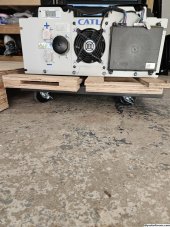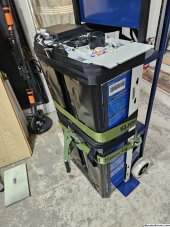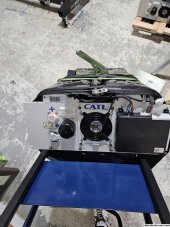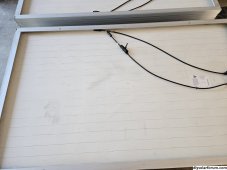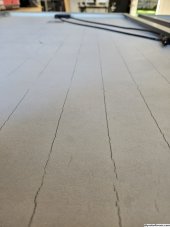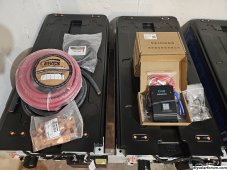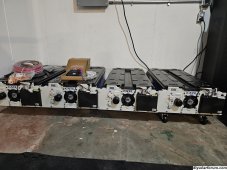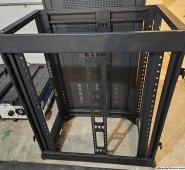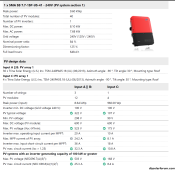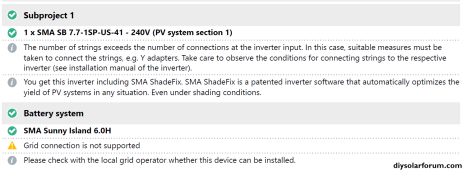Disturbedfuel15
New Member
Time is of the essence but I wanted to get a thread out here that I can update and receive feedback on! You've seen this before, I think two other members on this forum have started threads for their CATL module builds. So I won't go into what they are too much other than to say each is 20s, 3.2v. So I'll be doing the needful and carefully disconnecting four of the cells from each of the four modules, resulting in five 48v banks.
I realized I've been reading and reading and reading and reading BUT there are still so many options, I get analysis paralysis!

So I'll keep researching but if anybody has an opinion, please share! The only opinion I'm not wanting is 'You should have bought individual cells'. Honestly, I get that and I somewhat regret my decision, but not entirely. I felt pressured that these cells would not be around long and it was a rarity, so I bought them. It is what it is!
What have I purchased so far?
-Four CATL 20s 3.2v modules
-Five JK-B2A24S20P BMS with the optional push-button to turn them on
-35ft of 4/0 pure copper welding cable (I have a DIY electroplating setup from a past project I'll use for nickel-plating ends that touch aluminum)
-4/0 (1/2") pure copper battery lugs
-25ft roll of 3:1 marine-grade, double-walled, adhesive heat-shrink
-Tripp-Lite SR25UB server rack (3000lb static/2250lb rolling capacity)
-3/8"x1"x48" steel beams (making four 19"-wide support brackets, attaching to rear of CATL modules via 7/16 grade 8 bolts/locknuts) (for rack mounting)
-120v floor-mounted winch (paired with a pully system, saved my a$$ getting these 350lb modules to the basement. Will use for racking modules as well)
-Warn Pullzall winch (was on sale, figured I could use it to help guide the modules into position in the rack)
-40 235w Trina 'cracked vinyl' solar panels
I think that's about it. My idea is to run the house completely off of battery/solar from the hours of 1-7pm, because that is peak rate hours. Of course it would be nice to completely run off battery and solar 24/7. I want to do everything myself as I am very capable, but I understand some things, like if I wanted to sell back to the power company, would need to be installed/inspected by a credentialed electrician. I already spoke to my village president, asking him who I should talk to and what permits I'd need and he told me two things: #1 "I don't give a sh1t what you do, it's your business." #2 "The county electrical inspector will probably want to get paid." For what it's worth, I live in a very rural area, if that didn't make it obvious. I do know I will have to take some aspects of this more seriously than just that statement, but there's some backstory.
I heard you all like pictures, so I'll go ahead and post plenty of 'em! Thanks in advance for any help you can provide. I'm thankful for this forum and I'll definitely donate to it with extra funds after all is said and done. One last message here--I am what some would call a 'slow-DIY-er'. I do more research than is necessary, so don't expect this to move extremely fast! Although having a wife and kid wanting space back in the basement does motivate me a bit more ?


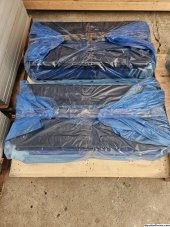

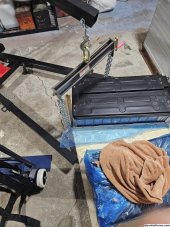
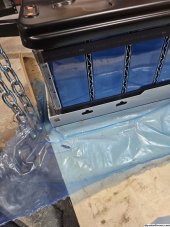



Whoops, can only attach ten files! I'll post more.
I realized I've been reading and reading and reading and reading BUT there are still so many options, I get analysis paralysis!

So I'll keep researching but if anybody has an opinion, please share! The only opinion I'm not wanting is 'You should have bought individual cells'. Honestly, I get that and I somewhat regret my decision, but not entirely. I felt pressured that these cells would not be around long and it was a rarity, so I bought them. It is what it is!
What have I purchased so far?
-Four CATL 20s 3.2v modules
-Five JK-B2A24S20P BMS with the optional push-button to turn them on
-35ft of 4/0 pure copper welding cable (I have a DIY electroplating setup from a past project I'll use for nickel-plating ends that touch aluminum)
-4/0 (1/2") pure copper battery lugs
-25ft roll of 3:1 marine-grade, double-walled, adhesive heat-shrink
-Tripp-Lite SR25UB server rack (3000lb static/2250lb rolling capacity)
-3/8"x1"x48" steel beams (making four 19"-wide support brackets, attaching to rear of CATL modules via 7/16 grade 8 bolts/locknuts) (for rack mounting)
-120v floor-mounted winch (paired with a pully system, saved my a$$ getting these 350lb modules to the basement. Will use for racking modules as well)
-Warn Pullzall winch (was on sale, figured I could use it to help guide the modules into position in the rack)
-40 235w Trina 'cracked vinyl' solar panels
I think that's about it. My idea is to run the house completely off of battery/solar from the hours of 1-7pm, because that is peak rate hours. Of course it would be nice to completely run off battery and solar 24/7. I want to do everything myself as I am very capable, but I understand some things, like if I wanted to sell back to the power company, would need to be installed/inspected by a credentialed electrician. I already spoke to my village president, asking him who I should talk to and what permits I'd need and he told me two things: #1 "I don't give a sh1t what you do, it's your business." #2 "The county electrical inspector will probably want to get paid." For what it's worth, I live in a very rural area, if that didn't make it obvious. I do know I will have to take some aspects of this more seriously than just that statement, but there's some backstory.
I heard you all like pictures, so I'll go ahead and post plenty of 'em! Thanks in advance for any help you can provide. I'm thankful for this forum and I'll definitely donate to it with extra funds after all is said and done. One last message here--I am what some would call a 'slow-DIY-er'. I do more research than is necessary, so don't expect this to move extremely fast! Although having a wife and kid wanting space back in the basement does motivate me a bit more ?









Whoops, can only attach ten files! I'll post more.



